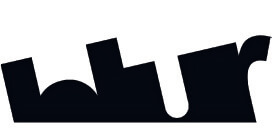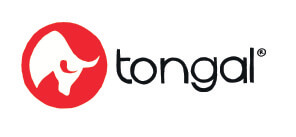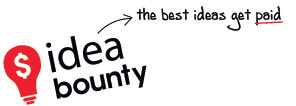The karaoke crowd
Marketers tied by contract to big, global communications agencies would traditionally harbour a secret yearning.
While the agency of record offered stability, scale and a certain comfortable rapport, the feeling was always present that, out there on the low-rent side of town, were younger, smarter offerings that the solus arrangement precluded – sexy starts-ups, fearless independents, agencies with thrillingly iconoclastic names, like Mother or St Luke’s.
Occasionally, a tryst would be arranged by a marketer either senior enough to cope with the fallout of breaking the rules, or junior enough not to care. A brief was quietly issued – usually something that the normal partner had struggled with for a while. It was rare that these indiscretions led to successful fulfilment across the endless rounds of consumer research and Link testing. But the itch got scratched.
With the coming of digital connectivity, the same yearning took on a different guise. Never mind fresher agencies, out there was an entire world, a whole stratum of undiscovered genius with its fingers tantalisingly poised on the keys. Out there was a crowd.
Intermediaries sprang up to facilitate the new desire – the now defunct OpenAd at first, then Idea Bounty, and recently the more nuanced offerings of Tongal, Zooppa, GeniusRocket and Blur, which tend to focus on a niche area, such as video, or claim to ‘curate’ their crowds.
Success stories are eagerly publicised – although, if you look closely, the same cases come up with suspicious regularity: TV ads for Danone yoghurt, Unilever’s Peperami, and Chevrolet, and various assignments for Pepsi, Pringles, Nokia and Gillette.
Meanwhile, look at the Cannes winners over the past three years, and it is clear that the agency teams still dominate. The crowd hasn’t shown up here yet. For all the creativity and freedom that the open internet fosters, for all the cleverness and wit that uploads itself onto YouTube every hour, very little of it translates to the world of branded, commercial communications. Why?
The answer is that commercial creativity demands a skill set far rarer than pure imagination and a love of freedom. It demands two capabilities that pull cruelly against each other. First: brilliant, sweeping originality. Second: its polar opposite – tight, disciplined compliance.
Brands are already highly organised constructs, long before the creative professional gets to work with them. The result is that commercial creativity is always about brilliance inside the box – one bounded on its six sides by the brief, the objective, the brand guidelines, the medium, its dimensions (either physical or temporal) and the budget – to say nothing of regulatory constraints. It takes an extraordinarily rare talent to come up with anything that simply covers the bases, let alone soars above it all to strike wonder into watching eyes.
The final episode in series 13 of Top Gear showed an entertaining glimpse of the difficulties. Jeremy Clarkson and James May attempted to create a 30-second TV ad for the Volkswagen Sirocco Diesel, presenting their ideas to DDB’s executive creative directors. One script after another was felled for being off-brief, inappropriate, clichéd or flagrantly in breach of regulations. The sequence was tongue-in-cheek, but it served to delineate the tiny space in which creative professionals must work their magic.
If it isn’t exactly a cinch for Clarkson and May, you can see the problem with the crowd. The barriers to entry are zero. Anyone can have a go and anyone does, with all the naivety, lack of discipline and rawness of talent that implies. No hawking the book around, no patient critique by seasoned creative directors, no editing – just a thick skin and the ability to tap the keys.
Crowdsourcing is to commercial creativity what the karaoke machine is to popular music. Many will step up – well-rewarded, crowd-sourced briefs attract responses in the thousands – and you will witness your great brand themes being tortured by renderings that are inharmonious, unremarkable or so wildly interpretive as to be almost unrecognisable.
Marketers will always feel the urge to step outside their routine agency agreements and, if the agency has become complacent, justly so. Most often, though, the talent is there on the inside, and just needs the usual nourishment of clarity, consistency, data and time.
World-class commercial creative talent is a scarce resource. If your agency has three award-winning teams prepared to pitch in together on your brand, under the watchful gaze of an ambitious creative director, that is already a crowd, and a good one, too.
The term “crowdsourcing” was coined in 2005 by Jeff Howe of Wired magazine, and defined as “the act of taking a job traditionally performed by a designated agent (usually an employee) and outsourcing it to an undefined, generally large group of people in the form of an open call.” The market for intermediated creative platforms has itself become crowded. These are some of the key players.
Blur  The Exeter-based ‘global services exchange’ boasts 44,000 ‘experts’ across a range of disciplines and claims to vet them all, though doesn’t specify how. The group caught the imagination of investors when it floated in late 2012, with its share price rising ten-fold by early 2014. Then it crashed back to earth, losing 90% of its value in six months, as it became clear that too few projects were making it through to completion.
The Exeter-based ‘global services exchange’ boasts 44,000 ‘experts’ across a range of disciplines and claims to vet them all, though doesn’t specify how. The group caught the imagination of investors when it floated in late 2012, with its share price rising ten-fold by early 2014. Then it crashed back to earth, losing 90% of its value in six months, as it became clear that too few projects were making it through to completion.
Tongal  The name is an anagram of Galton – an oblique reference to the English statistician celebrated in James Suroweicki’s The Wisdom of Crowds. Sir Francis Galton had attended a country fair in 1906 and observed that when guessing the weight of an ox, the average of the crowd’s guesses was more accurate than that of any given individual. The California-based platform, which recently attracted $15m in venture capital, claims to “revolutionize the way creative work gets done by making it accessible to everyone.”
The name is an anagram of Galton – an oblique reference to the English statistician celebrated in James Suroweicki’s The Wisdom of Crowds. Sir Francis Galton had attended a country fair in 1906 and observed that when guessing the weight of an ox, the average of the crowd’s guesses was more accurate than that of any given individual. The California-based platform, which recently attracted $15m in venture capital, claims to “revolutionize the way creative work gets done by making it accessible to everyone.”
Poptent  Specialising in video creation and production, Poptent claims to be “home to the largest community of independent filmmakers in the world.” Its videos are actively socialized, with content for Black & Decker and Clinique among its recent successes.
Specialising in video creation and production, Poptent claims to be “home to the largest community of independent filmmakers in the world.” Its videos are actively socialized, with content for Black & Decker and Clinique among its recent successes.
Idea Bounty  The South-Africa based platform ran into a storm from its own crowd when its $10,000 Peperami brief was won by an adbiz insider – who had previously worked in a Unilever agency. The story is not unusual, the irony being that venerable creatives who have been made redundant for not ‘getting’ digital are now using it to win back work their old agencies have lost to the crowd.
The South-Africa based platform ran into a storm from its own crowd when its $10,000 Peperami brief was won by an adbiz insider – who had previously worked in a Unilever agency. The story is not unusual, the irony being that venerable creatives who have been made redundant for not ‘getting’ digital are now using it to win back work their old agencies have lost to the crowd.
